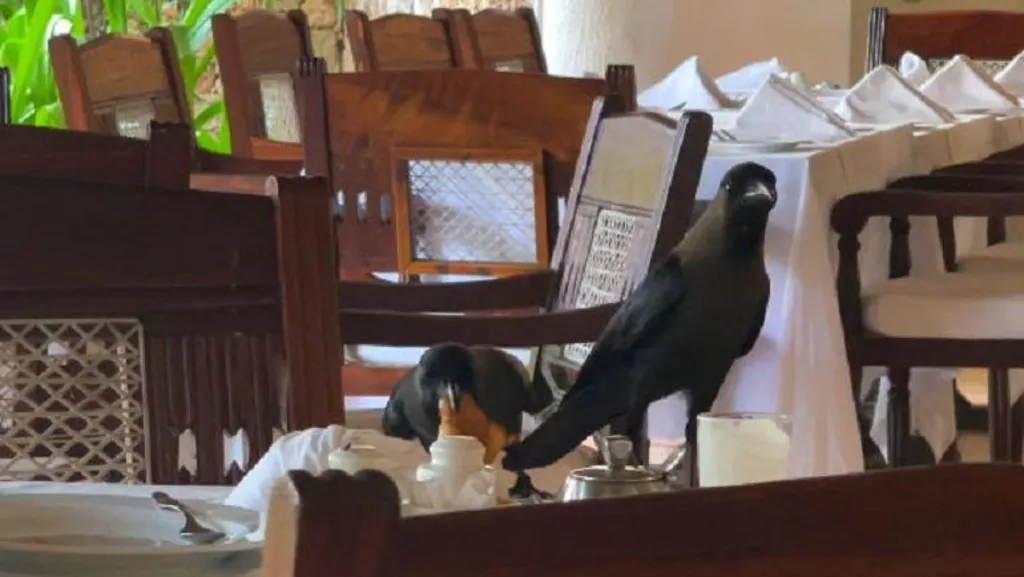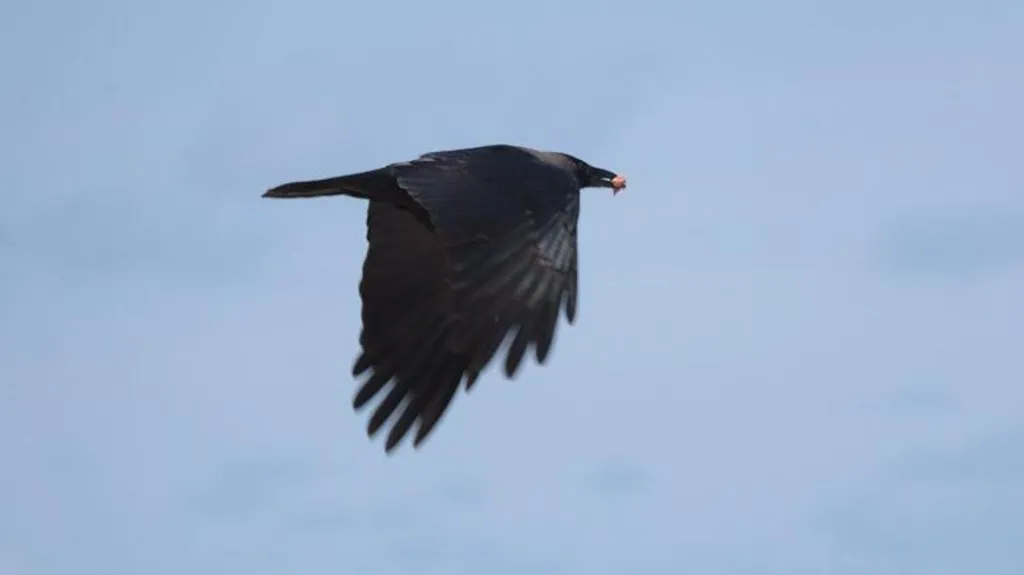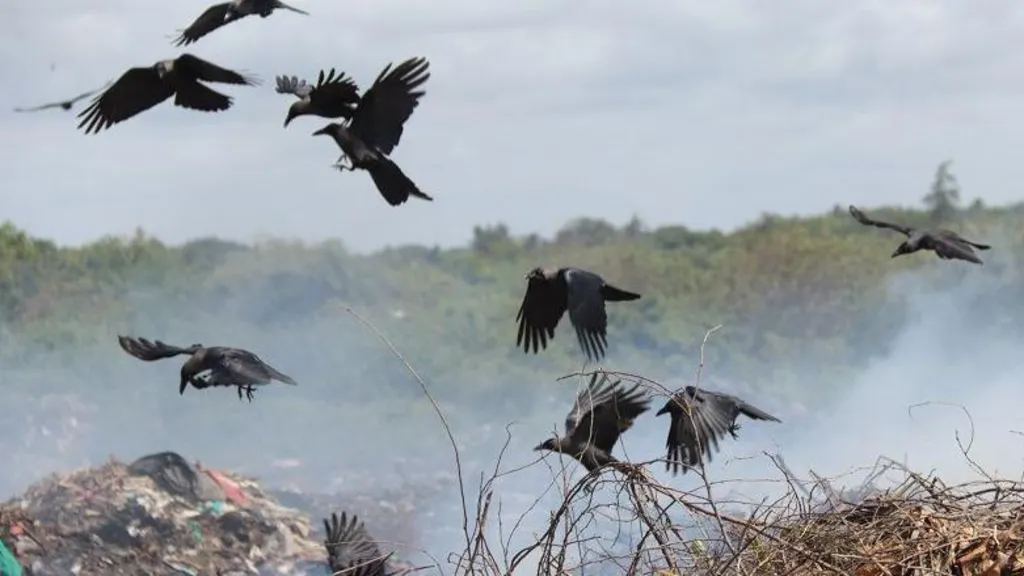The term “invasive alien birds” might sound like a plotline from a Hollywood thriller, but for residents of coastal Kenya, it’s a serious issue.
Concerned about the disturbances caused by Indian house crows, authorities have initiated a campaign to cull a million of these birds. Unlike the human-targeted terror of Hitchcock’s The Birds, these crows have been causing significant problems for years by preying on wildlife, raiding tourist spots, and attacking poultry farms.
The first phase of this eradication effort involves using poison in Watamu and Malindi, with the goal of preventing the crows from advancing toward Nairobi. Known locally as “kunguru” or “kurabu,” these crows originated in India and Asia, spreading via trade routes.
They were deliberately introduced to East Africa in the 1890s to address waste issues in Zanzibar, from where they eventually reached Kenya.

The crows were first documented in the port of Mombasa in 1947, and their numbers have surged since then due to the growing human population and the resulting piles of waste, which create a perfect environment for the birds to feed and reproduce. They also face no natural predators. Indian house crows, known for being highly invasive and destructive, have continued their northward expansion.
Jaap Gijsbertsen, a Dutch bird expert visiting Kenya’s Watamu area, noted that these crows prey on various indigenous species, including birds, mammals, and reptiles, causing severe damage to biodiversity.
Conservationists report that the crows have significantly decreased populations of small native birds like weavers and waxbills by destroying their nests and targeting eggs and chicks.
Lennox Kirao, a research scientist with A Rocha Kenya, explained that a decline in local bird populations can lead to environmental issues, such as an increase in harmful pests and insects that the birds would otherwise control.

The crows also cause harm to crops, livestock, and chickens. “They attack chicks with a frenzy. These birds behave erratically and are far from ordinary,” said Eunice Katana, a resident of Takaye village in Kilifi County. The crows are known to emit a distinct sound when they are distressed or spot prey, according to Mr. Kirao.
In Mombasa, the crows have marred buildings with their droppings, leading many people to avoid sitting under trees for fear of getting dirty. “These crows start their noisy activity early and disturb our sleep with their constant screeches and cawing,” reported Victor Kimuli, a resident of Mombasa.
In response to these problems, authorities have decided to take action by aiming to reduce the Indian house crow population by half through a poisoning campaign that began on Tuesday. This decision came after months of discussions with environmental experts, conservationists, community leaders, and representatives from the hotel industry, as noted by the Kenya Wildlife Service (KWS). “We are working to bring their numbers down to a manageable level,” said Mr. Kirao.
The culling process includes several months of pre-baiting, where meat is used to attract the birds to specific areas near their roosts. “We then poison them after gathering the largest possible number at these baiting sites,” explained Eric Kinoti from A Rocha Kenya. Starlicide, an avian poison, is currently the only known substance effective in reducing crow populations without harming other birds or animals.
In 2022, nearly 2,000 crows were killed during efficacy tests of the poison conducted by Little Kenya Gardens, the company authorized to import it, according to Cecilia Ruto, the firm’s owner. “The slow-acting poison is fully metabolized by the crow before it dies, minimizing the risk of secondary poisoning to other animals that might consume the dead crow,” Ms. Ruto explained.
Currently, there are 2 kilograms (4.4 pounds) of the poison in the country, expected to kill around 20,000 crows as part of the ongoing eradication efforts. Plans are underway to import more from New Zealand. However, the use of this poison has sparked ethical debates among animal and bird rights activists, who argue that poisoning is inhumane and advocate for exploring alternative, non-lethal methods.
“Mass poisoning is a temporary fix that doesn’t address the underlying issue,” said environmentalist Leonard Onyango. “We need to consider sustainable and humane solutions for managing the crow population.”
Those involved in the eradication program emphasize the importance of protecting native species and maintaining ecological balance. “If we don’t take action now, the damage could become irreversible,” stated Mr. Kirao, a participant in the culling effort.
This is not the first government attempt to control invasive bird species; a previous effort over 20 years ago successfully reduced their numbers, but the importation of Starlicide was later banned to better regulate the substances entering the country.

In addition to landfill sites, tourist hotels have become a prime target for the crows, which invade dining areas and disrupt guests’ meals, according to hotel owners. “The crows have become a significant nuisance for guests trying to enjoy their meals on the tropical beaches,” said Maureen Awuor, chairperson of the Kenya Association of Hotelkeepers and Caterers.
Some hotels have resorted to trapping and suffocating the crows, while others have employed staff with catapults to scare them away. However, trapping has proven ineffective as the crows quickly learn to avoid areas where they see other crows being captured or killed.
Despite plans to cull a large number of crows, authorities feel they have no choice but to proceed, particularly with concerns that the crows might spread further inland. Conservationists have reported sightings of the birds in the Mtito Andei area, approximately 240 kilometers (150 miles) from Nairobi. “My biggest concern is that if we don’t act now, the crows will reach Nairobi, which could severely impact birdlife, especially in Nairobi National Park,” warned Mr. Kirao.

